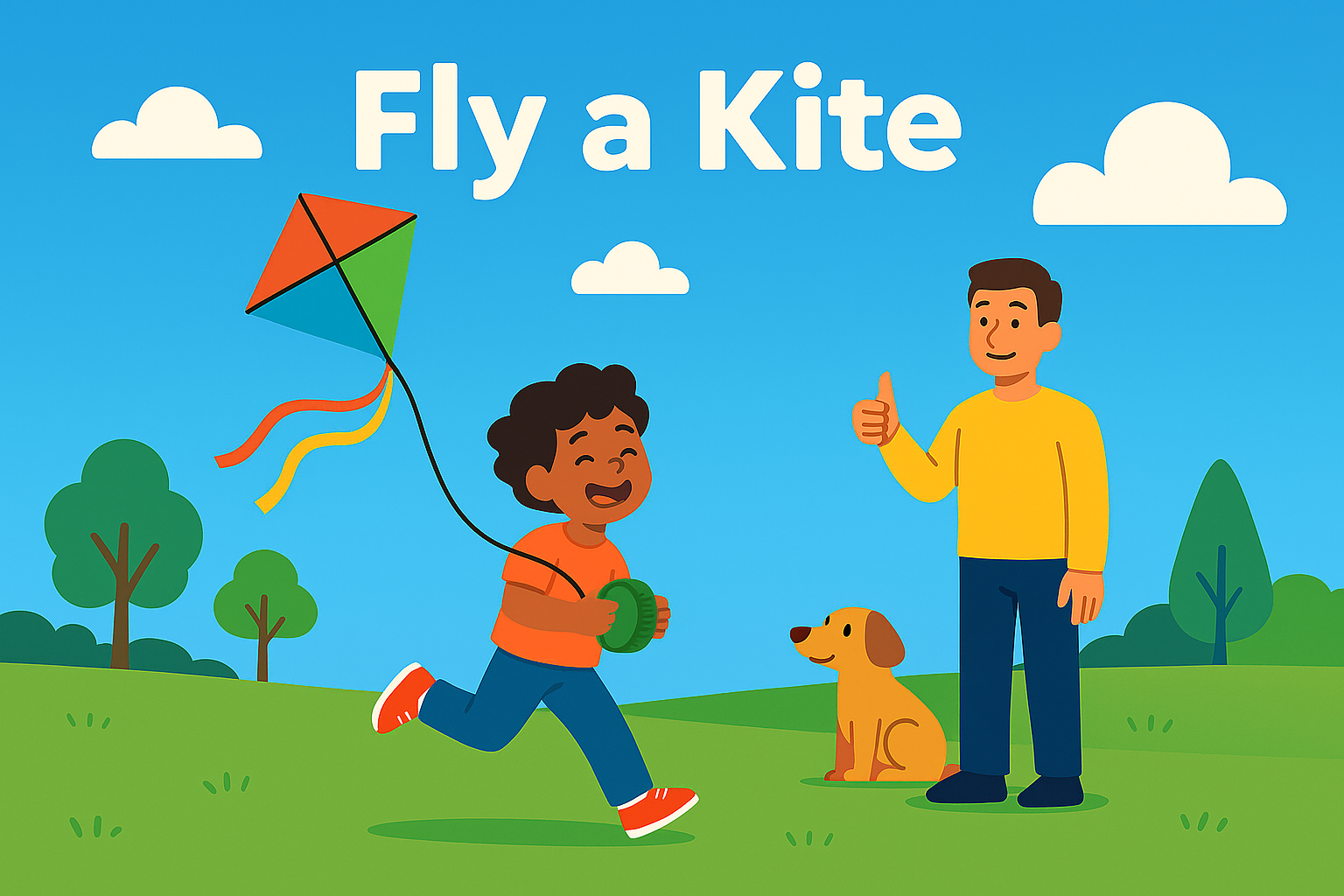Flying a kite is a joyful, low-cost way to enjoy the outdoors together. It encourages movement, coordination, and a sense of calm focus while watching the kite dance across the sky.
Materials
- Kite
- Flying line with handle/winder
- Tail ribbon or spare streamers (for balance)
- Optional: small ground peg or stake to secure the line
- Optional: lightweight gloves to prevent string burn
- Optional: tape or elastic bands for quick fixes
Tools
- No extra tools needed beyond the items above
Steps
- Pick a wide, open space away from trees, roads, power lines, water, and busy paths.
- Check for a light to moderate breeze (leaves rustling, jacket flapping). If it’s very gusty, wait for calmer conditions.
- Attach or check the tail. Unwind a few metres of line and face the wind.
- Two-person launch: The adult (or helper) holds the kite above head height. On a count of three, they release as the flyer gently walks backwards and lets the line out steadily.
- Solo launch: Hold the kite at shoulder height, release into the wind, and take a few brisk steps forward as you let the line out.
- Keep the kite steady with small, gentle tugs on the line. Let more line out as it climbs; reel in a little if it starts to wobble.
- Try simple challenges: keep it level for 20 seconds, draw a giant sky “circle,” or count how long it stays up.
- To land, walk forwards towards the kite while slowly winding the line in, guiding it down softly.
- Wrap the line neatly and check for knots before packing away.
Why It’s Great
- Movement – Encourages running, balance, and coordination.
- Focus – Calming, mindful attention on the kite and the wind.
- Teamwork – Launching and flying together builds cooperation.
- Problem-solving – Adjusting line and tail to keep the kite steady.
- Fresh air – Simple outdoor time that feels special.
Safety Tips
- Choose a clear, open area away from trees, power lines, roads, railways, and water.
- Do not fly in storms, rain, or very strong winds. Avoid flying near crowded paths or wildlife nesting areas.
- Keep a safe distance from others; use lightweight gloves to prevent string burn.
- Adults should supervise younger children and manage the line when it’s windy.


Leave a Reply